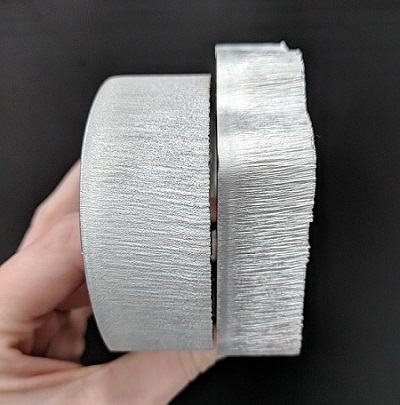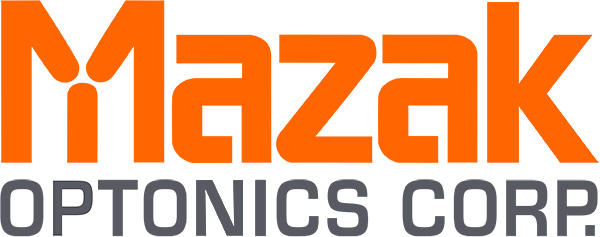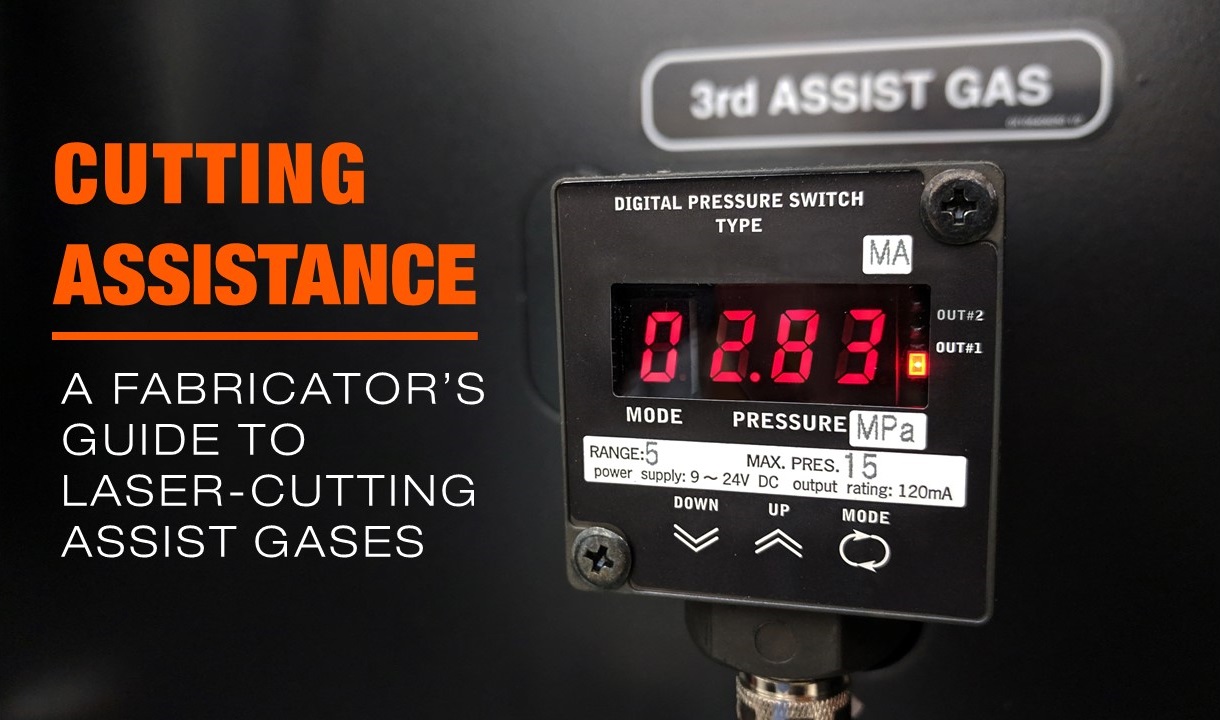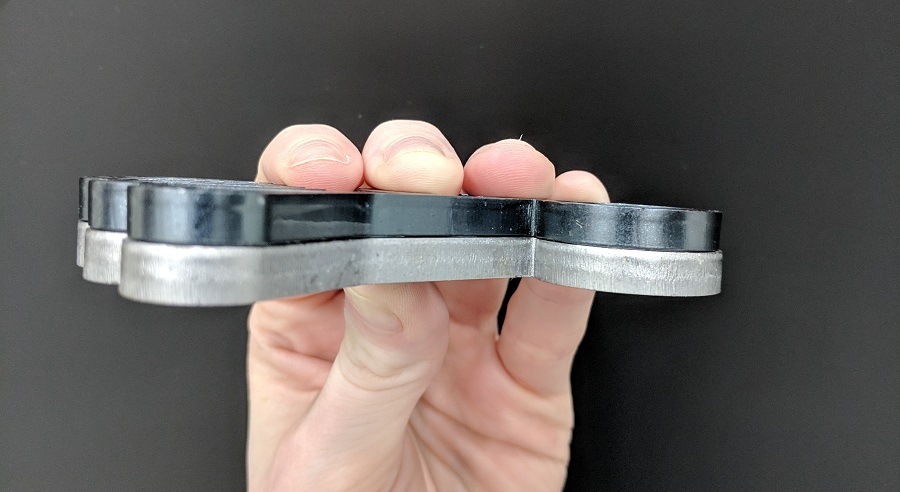A fabricator’s guide to laser-cutting assist gases
By Tim Tapper, Mazak Optonics Applications Manager
Whether you are new to laser-cutting or need a refresher course, here is what you need to know regarding assist gases. This laser-cutting assist gas guide is here to refine your understanding regarding the difference gases and why they are used.
Why are assist gases necessary?
A laser is a heat source with the laser beam melting the material. If there is no assist gas, then the material would be welded back together. The assist gas is the physical force that pushes the melted material out of the cut zone. The most commonly used assist gases for laser processing are oxygen, nitrogen, mixed gas, and high pressure air systems. There are other assist gases such as Argon but they are not as commonly used.
Oxygen
Oxygen is an assist gas that is used to add additional heat to the cutting process. When you use oxygen it is an exothermic reaction. This means energy is released through a heat source. The laser is the energy source and the oxygen amplifies it.
Oxygen is primarily used for thick mild steel toward the top end of the machine’s rated capacity. Unlike processing materials with an inert gas, where the laser is the only source of heat, thicker mild steel requires the additional heat from the oxygen to efficiently melt the steel. The point where oxygen is required to process a given thickness of mild steel is dependent on how much laser power the machine tool is equipped with. A 2000 watt laser cutting machine starts using oxygen at 10 gauge, where as an 8000 watt machine is not required to use oxygen until 3/8-inch.
Cutting mild steel with oxygen does present challenges. Since oxygen adds heat to the process, it is possible to overpower materials. Getting the right balance of oxygen pressure, laser power, and cutting federate, among other factors, makes oxygen cutting a balancing act. Oxygen cutting is a bit more difficult for new operators to adjust to and understand. With proper training and understanding of this assist gas, novice laser operators can master oxygen cutting.
Additionally, cutting with oxygen creates an oxide layer. This is a film that is left behind on the material. An oxide layer can create complications for the powder coating process. In order for the coating to adhere to the material, the edges of the parts cut with oxygen must be cleaned through either a chemical bath or steel brushes. Unfortunately, this is a necessary evil when cutting thick plate mild steel with oxygen.
Top part is cut with oxygen, bottom part is cut with nitrogen
Nitrogen
Nitrogen cutting, also known as clean cutting, works opposite of oxygen. Nitrogen is a cooling agent. This inert gas is nonflammable and does not undergo chemical reactions like oxygen cutting. Cutting with any inert gas, such as nitrogen, produces an endothermic reaction. This is where the gas acts solely as a force to push the molten steel, melted by only the heat from the laser, out of the cut.
But since nitrogen does not create more heat, the melting process is induced from only the heat of the laser beam. Therefore the maximum material thickness that can be processed is directly dependent on the amount of power your laser is rated for. For this reason, the larger the laser source, the thicker and faster the machine will cut all materials processed with nitrogen. This is part of the reason for the push for higher power in fiber laser-cutting machines.
This clean cutting process does have drawbacks. When cutting with nitrogen, it is common to use five to ten times more nitrogen than oxygen. This means a higher operating cost for nitrogen. Due to the higher operating costs, there is increased support for high pressure air systems and nitrogen generations systems.
Another possible downside with a nitrogen system is that users are then committed. Having a nitrogen tank system with regular refills from an air provider regularly means a five to seven year rental agreement. It also means you will need a location for your tanks. At Mazak Optonics, we have a concrete slab outside of our building for the multiple air tanks.
With the idea for lower operating costs, there are nitrogen generators which allow you to create your own gas. The initial investment is hefty but there are long term monetary benefits. It is similar to a high pressure air system but there are filters that remove all other gases except for nitrogen. This gives a high-quality, oxide-free cut edge comparable to that part coming off of a liquid nitrogen source.
Mixed gas
As soon as mixed gasses became popular, the trend started to fade. A mixed gas system starts with a mixer then has oxygen and nitrogen added to it. This process means purchasing a mixer and purchasing nitrogen and oxygen. This is the most expensive assist gas system option.
But with the high cost, comes high reward especially for aluminum. Mixed gas gives aluminum a superior cut edge over nitrogen. Mixed gas cutting with aluminum gives minimal bur to the processed parts. But this mixture also can increase cutting speeds from 10 to 15 percent for steel and aluminum.
It is also possible to purchase pre-mixed gas from a vendor instead of mixing it yourself, but purchasing pre-mixed gas can be expensive. If you are going to use this form of assist gas, buying a mixed gas system is your best economic option.
High pressure air systems
Originally air systems started by using the 150 to 200 psi compressor in the back of a shop. With this limited pressure, capacity was reduced to cutting 1/8-inch and under. But now, there are high pressure systems with 400 to 500 psi which is equal to most people’s nitrogen pressure from a bulk tank. The system draws in the air and compresses it to build pressure.
The initial investment to get a compressor is what is most expensive. But once you purchase the system, you are producing your own gas instead of renting, leasing and paying for gas every month. This is an owned air system which is created from the gas in your facility.
 Another aspect that makes high pressure air systems attractive is less commitment. With a nitrogen system you are required to have a rental agreement. An owned air system allows the freedom to adjust your assist gas method without worrying about your renting contract.
Another aspect that makes high pressure air systems attractive is less commitment. With a nitrogen system you are required to have a rental agreement. An owned air system allows the freedom to adjust your assist gas method without worrying about your renting contract.
You are able to cut anything with air. It is especially great for aluminum cutting. The picture shows aluminum cut with air (left side) and aluminum cut with nitrogen (right). You can cut other materials as well such as stainless steel but this may have a tarnish or gray edge. Air cutting mild steel has a slightly rougher edge quality but this is all dependent on edge quality acceptance.
Final cut
Overall, there are a variety of different options and factors that play into which assist gas is most effect for your application. These variables can range from material type, edge quality acceptance, cost, secondary processes, etc. For more information on assist gas or for cutting questions, contact the Mazak applications support line at 1-888-MAZAK-US (62925-87).


